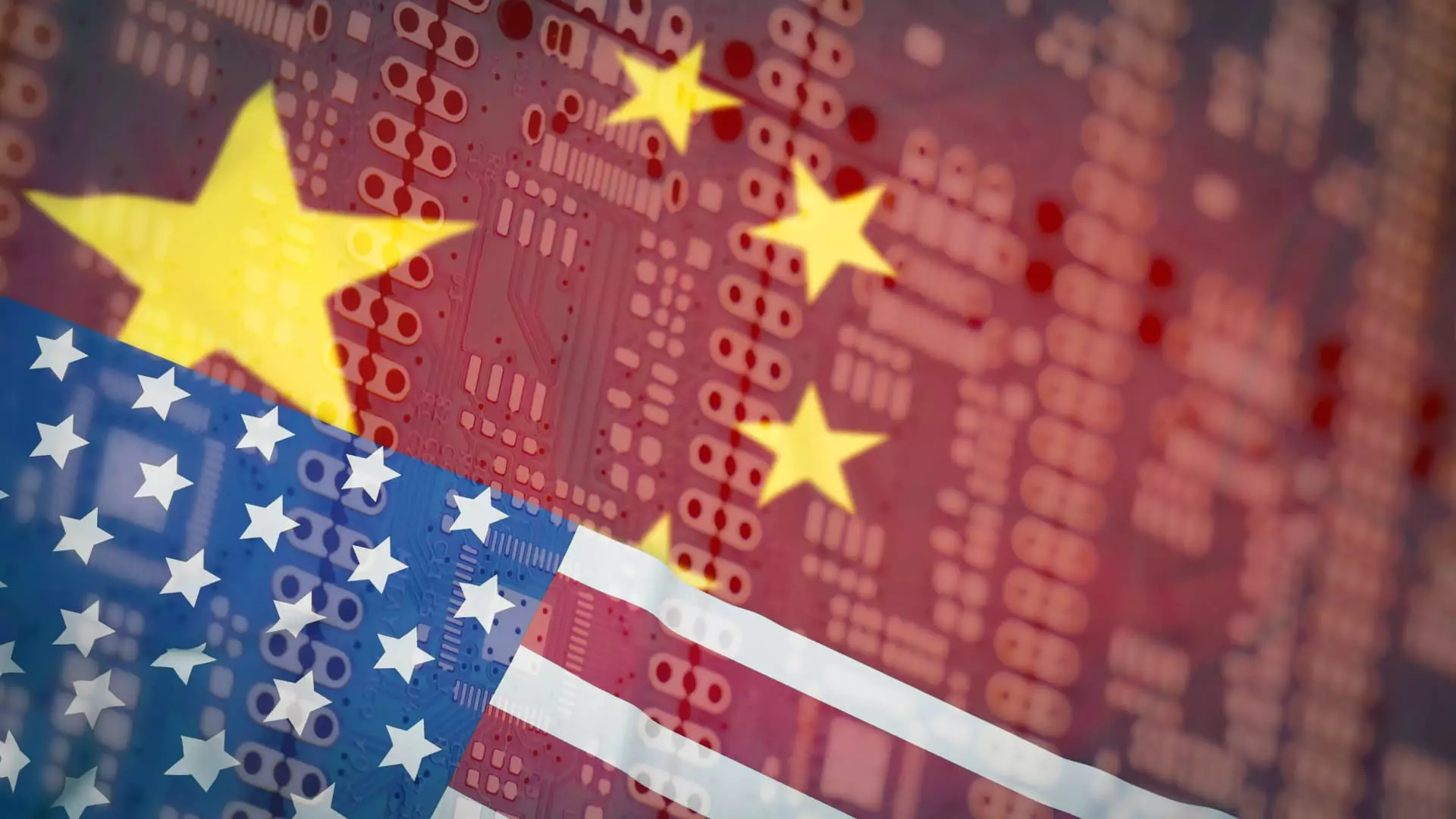In an increasingly competitive global environment, Tencent and Baidu, two titans of China’s technology sector, are demonstrating remarkable resilience in the face of U.S. semiconductor export restrictions. Recent actions by the U.S. government, including an uptick in controls on advanced semiconductors from companies like Nvidia and AMD, have prompted these firms to rethink their strategies. Rather than crumbling under pressure, Tencent and Baidu are cleverly stockpiling resources, optimizing their existing models, and leaning on domestic semiconductor technology. As they navigate these turbulent waters, it is evident that innovation and adaptability will play crucial roles in maintaining their edge.
Microsoft’s Vision: Chip Inventory and Efficient Model Training
At the helm of Tencent, Martin Lau, the company’s president, provided insight into their strategic foresight regarding chip inventory, notably citing their extensive stock of GPUs—the critical components for training sophisticated AI models. Lau’s statement about having a “pretty strong stockpile” reflects a proactive approach to mitigating risks associated with global supply chain disruptions. The emphasis on using fewer, more efficiently utilized GPUs to achieve high-quality AI training results is a game-changer. While many American firms constantly expand their GPU clusters, Tencent is shattering the notion that more is always better. This perspective of re-evaluating existing resources, rather than simply amassing new ones, is emblematic of a forward-thinking business model that prioritizes sustainable growth and optimum resource allocation.
Optimization: The Key to Sustaining Competitive Advantage
When it comes to actually executing AI tasks—a crucial aspect of their operations—Tencent is adopting a multifaceted approach. As Lau highlighted, software optimization stands out as a key component of their strategy, enabling the firm to utilize its current GPU capabilities more effectively. This pivot towards optimizing computational resources over indiscriminately expanding them reflects an innovative mindset that many businesses should emulate. By focusing on software rather than treating GPUs as the sole cornerstone of AI operations, Tencent underscores the value of intelligent design and engineering in the tech realm.
Moreover, the exploration of smaller, less power-hungry AI models indicates a growing understanding of the need to balance performance with resource consumption. This adaptability can lead to breakthroughs that not only cater to immediate needs but also lay the groundwork for more sustainable AI innovation.
Baidu’s Comprehensive AI Ecosystem: An Integrated Approach
On a parallel front, Baidu is claiming its position by emphasizing a “full-stack” approach to AI development. With its robust ecosystem comprising cloud computing infrastructure, innovative AI models, and a suite of applications powered by those models—such as the ERNIE chatbot—Baidu is crafting a narrative of self-sufficiency. Dou Shen, the head of Baidu’s AI cloud branch, succinctly encapsulated this ethos, stating that their proprietary technology allows them to deliver value without needing the most advanced chips.
Baidu’s focus on pillar technology development allows for the creation of systems that can thrive within more constrained parameters. By capitalizing on its existing technology stack while concurrently developing more cost-effective operational frameworks, Baidu showcases how one can still innovate when faced with daunting external challenges. Their success in optimizing the use of GPUs contributes to a competitive advantage that is difficult for rivals to replicate.
China’s Semiconductor Aspirations and Future Prospects
The narrative around U.S. export controls cannot be discussed without referencing the broader context of China’s domestic semiconductor ambitions. Analysts like Gaurav Gupta have noted that despite a historical lag in semiconductor technology relative to the U.S., China has embarked on a comprehensive self-sufficiency campaign. This initiative spans everything from raw materials to chip design and production, demonstrating a strong commitment to innovation. China’s technology firms are making strides in areas previously dominated by American conglomerates, paving the way for a more autonomous tech ecosystem.
Contrary to the pessimistic view that such curbs might stifle Chinese innovation, the reality appears to be one of motivation and opportunity. The combination of home-grown chip production and software improvements seems poised to provide a redoubtable base for sustained growth in AI competencies. It is not merely a survival tactic; it reflects a long-term vision that could redefine the global AI landscape.
Market Reactions: Implications for Global Industry
As these two giants forge ahead, their strategies will inevitably influence market dynamics both locally and globally. For U.S. firms, there is a growing realization that strict export controls may hamper their competitive advantages more than they curb Chinese growth. Nvidia’s CEO has openly criticized these restrictions, highlighting a potential disconnect between policy-making and business realities. The evolving landscape suggests that the ability to adapt, innovate, and leverage existing resources will determine not just the fate of Tencent and Baidu, but the broader technological arms race as well. As they continue to navigate challenges, these firms might just emerge not only as survivors but as leaders in the new global paradigm of artificial intelligence.

